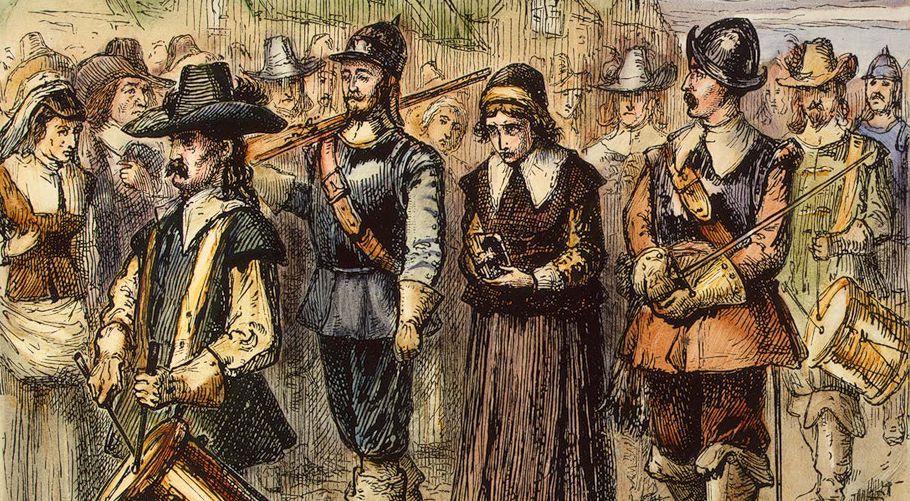Authors:
Historic Era: Era 3: Revolution and the New Nation (1754-1820s)
Historic Theme:
Subject:
Winter 2020 | Volume 64, Issue 1


Authors:
Historic Era: Era 3: Revolution and the New Nation (1754-1820s)
Historic Theme:
Subject:
Winter 2020 | Volume 64, Issue 1
Editor's Note: Steven Waldman is one of our most articulate thinkers on the subject of religion. He was National Editor of US News & World Report and founded the multifaith religion website Beliefnet.com. He has also published several books including Sacred Liberty: America's Long, Bloody, and Ongoing Struggle for Religious Freedom and Founding Faith: How Our Founding Fathers Forged a Radical New Approach to Religious Liberty. Waldman currently runs Report for America, a nonprofit dedicated to strengthening our democracy through local journalism.
—The Editors
The Reverend John Waller was preaching in Caroline County, Virginia, in 1771 when an Anglican minister strode up to the pulpit and jammed the butt end of a horse whip into his mouth. Waller was dragged outside, where a local sheriff beat him bloody. He spent 113 days in jail—for the crime of being a Baptist preacher. When the Reverend James Ireland was jailed in nearby Culpeper County, he continued to preach through his cell’s barred windows. To stop him, Anglican church leaders galloped horses through the crowd, and hecklers urinated in his face. The Reverend David Thomas’s services were disrupted by protesters who hurled live snakes and a hornet’s nest into the room.
These were among 150 major attacks against Baptists in Virginia between 1760 and 1778, many of them carried out by leaders of local Anglican churches — and, significantly, many of them within a horse ride of a young James Madison.
“This vexes me the most of any thing,” Madison, then 23, complained to his friend William Bradford in 1774. He told Bradford that five or six “well-meaning” Baptist ministers were at that moment imprisoned in neighboring Culpeper County for what he considered an absurd charge—preaching the gospel and “publishing their religious Sentiments.” In the two years since Madison returned home from college in New Jersey, he had “squabbled and scolded” about the abuse of the Baptists but to little avail: “That diabolical, Hell-conceived principle of persecution rages.”
As alien as these kinds of attacks seem today — Anglican ministers brutalizing Baptist ministers on the eve of the American Revolution? — they were much more common in our history than we like to admit. Those who demand religious rights have too often been mocked and murdered, tarred and feathered.
The same nation that boasts of its commitment to religious liberty also allowed for the following injustices
Yet, today, we enjoy such robust religious freedom that this litany of persecutions is horrifying. Proof of how far we have come was on display in 2016 when the United States Supreme Court began its session by seating six Catholics and three Jews as justices. Men and women who would not have been allowed to hold office in early America would pass judgment on paramount questions of state, including religious liberty. Progress can also be seen each time Congress convenes, with invocations offered by every flavor of Christian clergy as well as by Muslim imams, Hindu priests, and Jewish rabbis.

Or consider the story of Parley Pratt, one of the original “twelve apostles” who helped found the Church of Jesus Christ of Latter-day Saints. Pratt was imprisoned in 1838 with Mormonism’s founder, Joseph Smith, and driven out of Missouri by mobs of angry Protestants. Pratt had twelve wives and was later murdered by the estranged former husband of one of them. His relatives fled to Mexico to avoid prosecution for polygamy. Yet in 2012, the Republican Party — which had earlier led the drive to ban Mormonism — chose as its nominee Parley Pratt’s great-great-grandson Mitt Romney.
The strength of America’s approach may be judged not just in the relative absence of persecution but in the nation’s spiritual vibrancy — three hundred sixty thousand houses of worship, from Adventist to Zoroastrian, from urban storefront churches that seat a dozen to Christian mega-churches that hold forty thousand. Spiritual practice thrives even more in the privacy of our homes: 76 percent of Americans pray regularly. Notably, affluence has